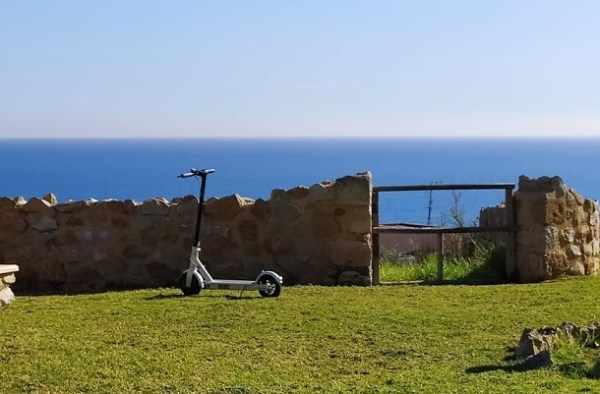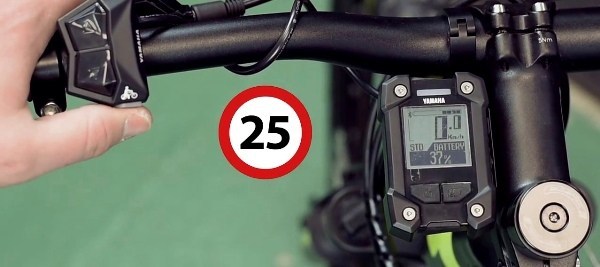Prior to the final approval of the law which will ensure safer movements of personal mobility vehicles (Vehículos de Movilidad Personal or VMP), the director general of traffic has issued new guidelines for how these new modes of transport should be incorporated into daily life.
The objective is to establish clarifying criteria for users, city councils and law enforcement officers until the formal regulation is published.
The guidelines and subsequent law have come about due to the increase in personal mobility vehicles that are proliferating in urban areas, where these vehicles have become an alternative means of displacement for citizens.
The formal regulation of personal mobility vehicles is currently in the processing phase, but this does not prevent an instruction, such as the one published, from detailing the criteria to which these vehicles are subjected to within the current traffic regulations.
“The DGT has published the guidelines at the request of traffic police given the increase in situations that are occurring in many towns and cities that have a negative impact on road safety, especially when it affects vulnerable groups” said Javier Villalba, deputy director of regulations at the DGT.
The instruction advances the definition envisaged for VMP in the pending modification of the Reglamento General de Vehículos (RGC) with the objective of contributing to the transparency and competition of the affected operators, starting with the current and future users themselves.
According to the instruction a VMP is a vehicle with one or more wheels equipped with a single seat and propelled exclusively by electric motors that can provide the vehicle with a maximum design speed of between 6 and 25 kilometres per hour.
Therefore, the following are not classed as VMP:
- Vehicles without self-balancing system and with saddle.
- Vehicles designed for competition.
- Vehicles for people with reduced mobility.
- Vehicles included in the scope of EU Regulation N2 168/2013: scooters with a seat, motorcycles, two-wheel mopeds…. Remember that these vehicles require administrative authorisation to drive (ITV and vehicle registration, and driving licence), and require an insurance policy, in addition to the use of a helmet.
As a general rule, gadgets that do not exceed the speed of 6 kilometres per hour are considered toys. Those that can exceed 25 kilometres per hour are considered vehicles (mopeds).
VMPs do not require administrative authorisation (ITV and registration, and driving licence) to drive, or mandatory insurance. Therefore, points will not be deducted from the driver when it is clear that the type of vehicle is a VMP.
SANCTIONABLE BEHAVIOURS
For the knowledge of both users and traffic police, the instruction also includes those improper behaviours that are subject to sanctions and fines as they are considered unsafe practices:
- Users of VMPs are obliged to undergo alcohol and drug tests, being sanctioned, with the same economic amount and consequences as if they were driving another vehicle, in case of exceeding alcohol rates (500 or 1,000 euro depending on the excess rate) or in case of presence of drugs (1,000 euro).
- In case of refusing to submit to such tests, in principle and unless the competent Prosecutor’s Office of the province can establish other criteria for a possible charge for a criminal offence typified in article 379.2 of the Criminal Code – which will always be of preferential application – they will be reported as an administrative infraction.
- If the driver is positive for alcohol or drugs, the VMP is immobilised, as is the case with other vehicles.
- As they are vehicle drivers, users are prohibited from using a mobile phone or any other manual communication system whilst driving. The penalty would be 200 euro (Article 12.2.5B of the RGC).
- Users are prohibited from driving using headphones or headphones connected to receiving devices or sound players. If they are detected, they will be denounced by this precept with a 200 euro fine (Article 12.2.5A of the RGC).
- Helmet and other protection elements. In the absence of a regulation in the RGC, the use of these elements will be governed by the provisions of the corresponding Municipal Ordinance. In the event that the ordinance regulates the mandatory use of a helmet, the sanction will be 200 euro (art 118.1 of the RGC) and will proceed with the immobilisation of the vehicle in accordance with article 104.1.c) of the consolidated text of the road safety law.
- VMP are banned from driving on pavements and pedestrian areas, since Article 121 of the RGC prohibits the movement of any vehicle on pavements (except skateboards, skates or similar devices) being punishable with a 200 fine, with the qualifications that the Municipal Ordinances can establish.
- VMP and other electrically powered light vehicles are only authorised to transport one person, so the movement of two or more people on a VMP is punishable by a 100 fine (Article 9.1.5.E of the RGC).
- Driving at night or in poor visibility without lighting or high visibility garments with reflective elements is considered negligent and therefore punishable, since in these cases the driver does not show the necessary diligence to be seen by the other road users or the necessary precaution to avoid danger. The corresponding penalty is 200 euro (article 3.1 of the RGC).
The municipal ordinances are those that establish the prohibitions regarding the stopping and parking of these vehicles. As far as the DGT is concerned, pavements are for pedestrians, but the regulation is exclusively municipal.
In the case of the infractions being committed by persons under 18 years of age, the parents or guardians will be jointly and severally liable for the infraction committed by the minor.
COMMERCIALISED VEHICLES
Due to the electronic commerce and the possibility of acquiring vehicles that are sold as VMP but which are not, the DGT warns of the importance of looking at the technical characteristics of the device, paying special attention to speed, which cannot exceed 25 kilometres per hour, and the power.
In addition, if they are put into circulation, devices that apparently offer benefits (speed or power) greater than a VMP and do not meet the requirements of EU Regulation No 168/2013, cannot be driven on the roads subject to regulation and their drivers will be denounced with a penalty of 500 euro and will be immobilised and deposited thereof. This same group includes cases of VMP that have been manipulated to alter the speed or technical characteristics.









